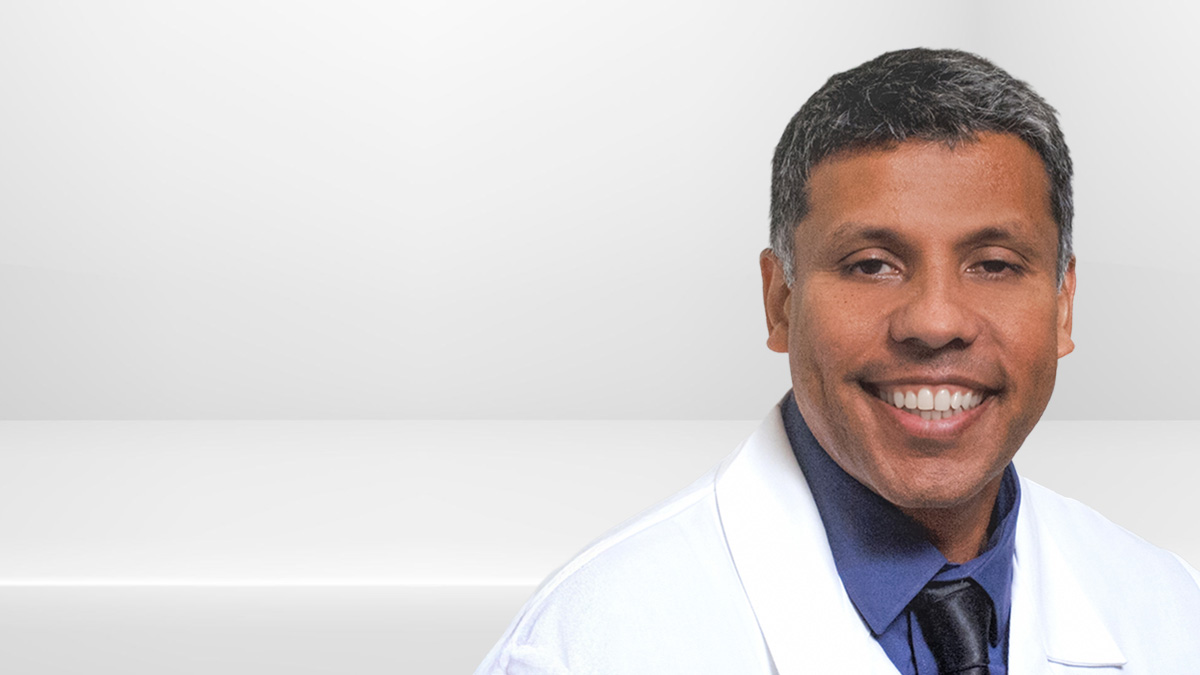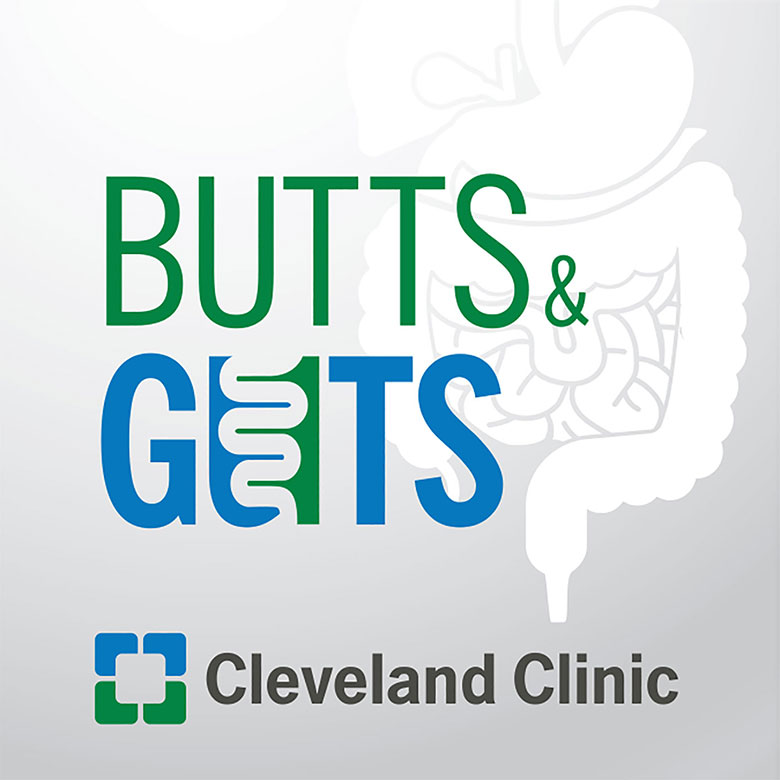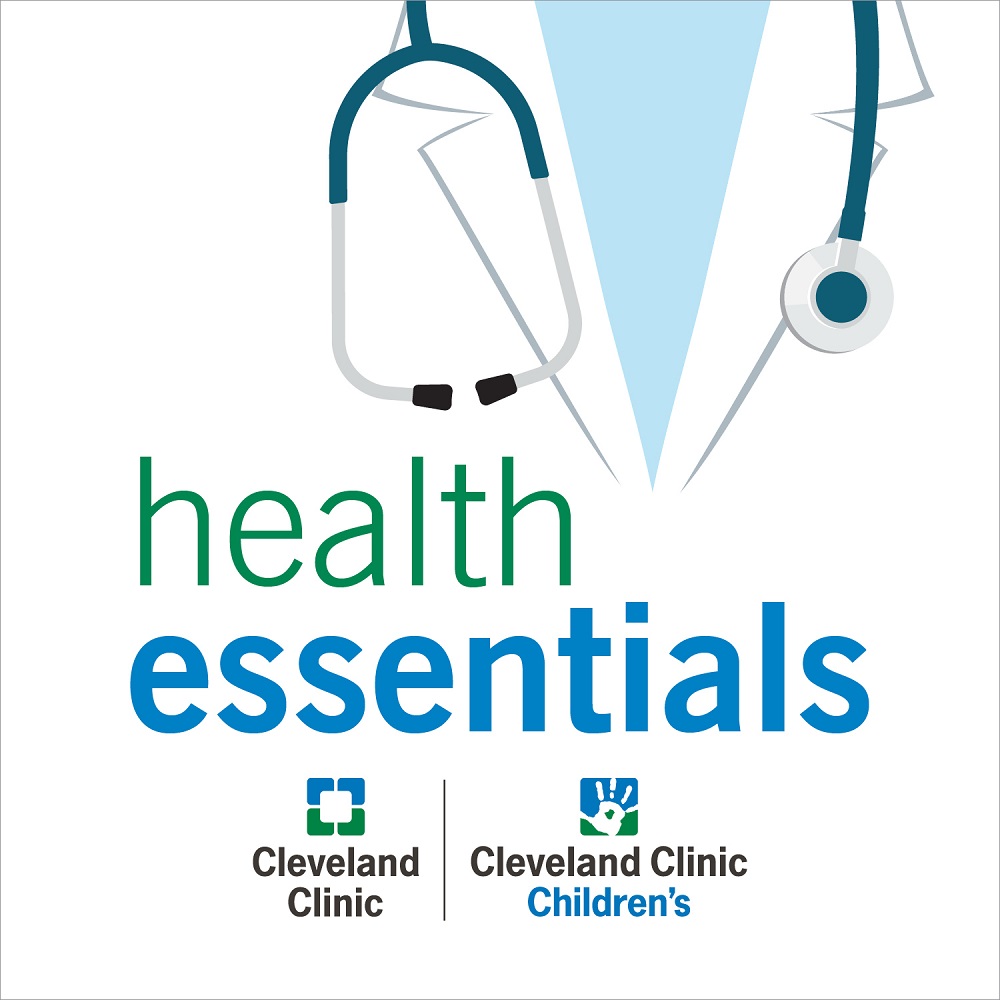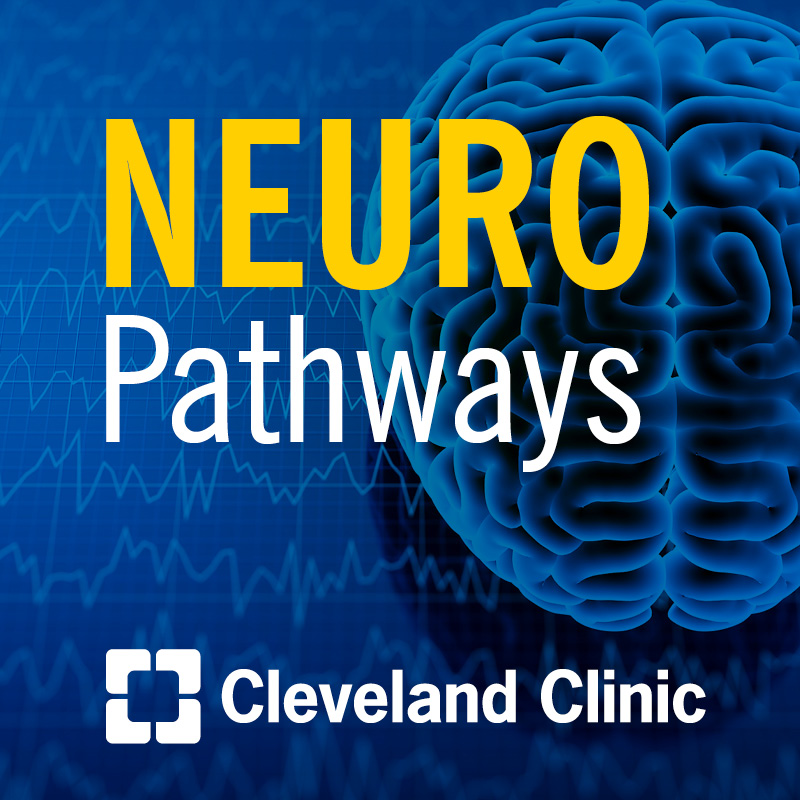Pancreatic Cysts

Dr. Tilak Shah is an interventional endoscopist and medical director of the Pancreas Center at Cleveland Clinic Florida. He joins this episode of Butts & Guts to discuss pancreatic cysts. Listen to learn more about what causes pancreatic cysts, how they are diagnosed and treated, and what types have the potential of turning into cancer.
Subscribe: Apple Podcasts | Podcast Addict | Spotify | Buzzsprout
Pancreatic Cysts
Podcast Transcript
Dr. Scott Steele: Butts & Guts, a Cleveland Clinic podcast, exploring your digestive and surgical health from end to end.
Hi again everyone, and welcome to another episode of Butts & Guts. I'm your host, Scott Steele, the president of main campus, and colorectal surgeon here at the Cleveland Clinic in beautiful Cleveland, Ohio. And today I'm very pleased to welcome our expert guest, Dr. Tilak Shah, an interventional endoscopist and medical director of the Pancreas Center at Cleveland Clinic Florida. Dr. Shah, thanks for joining us on Butts & Guts.
Dr. Tilak Shah: Thank you. Thanks for having me.
Dr. Scott Steele: So can you give us a little bit of background for our listeners out there? Where're you from, where'd you train, and how'd it come to the point you're at Cleveland Clinic, Florida?
Dr. Tilak Shah: Yeah. Well, I'm originally from New York, but I did most of my clinic further south, in North Carolina, at Carolina and Duke. And then I moved even further south for my interventional training to Emory, and I was at Virginia for eight years, at VCU. I joined the clinic here in Florida about three years ago to grow the Pancreas Center, and I've had an excellent experience so far.
Dr. Scott Steele: That's fantastic. And we're so glad that you're here. So today we're going to be talking a little bit about pancreatic cysts. To start, can you give us a little bit of an overview on what they are and how common are they?
Dr. Tilak Shah: Sure. So any time we use the term cyst, what we really mean is a collection of liquid. So when we're talking about pancreatic cysts, we really mean a collection of liquid material near the pancreas. And pancreas cysts are actually quite common. By some estimates, two to 3% of all patients who have an MRI or a CT scan have a cyst picked up in the pancreas. And they're even more common as you get older. So folks over the age of 70, you can actually find a cyst in the pancreas in one in 10 of these patients, so 10% of these patients.
Dr. Scott Steele: Are there different types of pancreatic cysts? And if so, what's the difference between them?
Dr. Tilak Shah: Sure. There's several different kinds of pancreatic cysts, and when I think of them, I'd like to categorize them in three separate buckets. So the first bucket of cysts are cysts that are related to inflammation of the pancreas, or pancreatitis. And these cysts are called pseudocysts, because they don't actually have a lining, it's just a wall of inflammatory tissue. A second bucket of cysts are cysts that never develop into cancer, so they're benign pancreatic cysts. And a third group of cysts are cysts that do have some potential to develop into cancer, these are cysts that tend to make mucus, incidentally. And so those are three categories of cysts that I like to think of.
Dr. Scott Steele: So what causes these pancreatic cysts? Are they hereditary? Is it from what we eat, or exposure? What's going on here?
Dr. Tilak Shah: Yeah, so we have a good sense of what causes cysts related to pancreatitis. What happens in pancreatitis, at least one potential mechanism is you have inflammation of the pancreas. And your pancreas has a duct, and when you have damage to the duct or the pipe of the pancreas, some of the juices can leak out. And that fluid then causes inflammation around, because these ... Pancreatic juice typically has enzymes or proteins that help digest food. And so it tends to cause inflammation around the surrounding tissue. And while it forms this inflammatory component that forms a wall, with the fluid collection inside. So that's the general mechanism by which these pseudocysts related to pancreatitis form.
Now, with regards to all of the other cysts, we don't have a great idea of why they develop. There are some rare genetic conditions that can form benign cysts, and particularly there's a rare condition called von Hippel-Lindau syndrome that can form a type of cyst called a serous cystadenoma, which is benign and does not develop into cancer. But really for most of the other cysts, particularly the precancerous mucin-producing cysts, we really don't have a good sense of what causes them, or whether diet and lifestyle play a role.
Dr. Scott Steele: So why do so many people have pancreatic cysts without knowing it?
Dr. Tilak Shah: Well, most cysts in the pancreas don't actually cause any symptoms. What typically happens, the typical scenario that I see in clinic is a patient have abdominal pain or nausea, was getting a scan for some other reason, and incidentally, they found that the patient has a cyst in their pancreas.
And particularly if it's a tiny cyst, it tends not to cause any symptoms. So really you quickly realize that the cause of their symptoms are not the pancreatic cysts, it's something else.
Dr. Scott Steele: So if they do have signs and symptoms, what might those be?
Dr. Tilak Shah: Yeah, so again, it's helpful to think of the first bucket of cysts, the cysts that are related to pancreatitis or pseudocyst. So these cysts can sometimes get quite large, and if they get very large, they can push on the stomach and cause symptoms of abdominal pain, nausea, vomiting, not being able to eat a complete meal.
Sometimes, if the cysts are located in what we call the head of the pancreas, they can push on the pipe that drains bile from the liver into the intestine. And if bile can't drain, the signs would be things like yellow eyes, dark urine, itching, which would all be signs of jaundice.
Pseudocysts can become infected, which can be quite serious, and cause fevers, chills, oftentimes require admission to the hospital. So that would be the typical symptoms that could be related to a large pseudocyst.
The benign cysts typically don't cause any symptoms, but again, certain benign cysts, those serous cystadenomas that I talked about, every now and then they can get quite large and cause some of the same sort of symptoms related to pushing on the stomach, or blocking the bile duct.
And then mucus-producing cysts can sometimes clog the duct of the pancreas, and if pancreatic juices can't drain, then you can get inflammation of the pancreas or pancreatitis. So those would be the potential symptoms of cysts in the pancreas.
Dr. Scott Steele: So is there a cancer risk associated with these cysts, and if so, what's the actual likelihood of them either leading to or being associated with pancreatic cancer?
Dr. Tilak Shah: Sure. And again, the cancer risk really depends on the type of cyst, whether it's the type of cyst that could potentially develop into cancer, or those that never develop into cancer.
But even among cysts that have the potential to develop into cancer, there's a risk depending on what type of cyst it is and where in the pancreas it originates from. So if you have a pseudocyst, or a cyst that's occurring because of pancreatitis, those cysts typically never develop into cancer. On the other hand, if you have a mucus-producing cyst, what's typically happening is these are little sort of precancerous growths that occur in the lining of the duct cells of the pancreas. So the duct is basically the pipe that drains pancreatic juices into the intestine, and these precancerous cells make mucus. So when mucus clogs the duct, it basically ends up leading to accumulation of fluid and formation of a cyst.
And if you have these growths occurring in a side branch, so when we think of the duct, you think of it as a tree with branches. So if you have these abnormal growths occurring on a side branch, or one of the branches, that's called a side branch IPMN, and these tend to have a much lower risk of cancer than a cyst that occurs in the main duct, or a main duct IPMN, and it can be quite drastic.
So if you have a small IPMN from a side branch, the risk of cancer is really less than 1% over 10 to 15 years. On the other hand, if you have a main duct IPMN, the risk of cancer is up to 70%, so really high. And then you have the intermediate risk IPMNs, ones that are more than two to three centimeters, but are not originating from the main duct, and those tend to have a 10 to 20% risk of cancer. But it's important to recognize that this is over 10 to 15 years, so it's not kind of like tomorrow you're going to get cancer.
Dr. Scott Steele: Can you walk us through the diagnostic process? What tests and procedures are used to evaluate these pancreatic cysts once we know that they're there?
Dr. Tilak Shah: Yeah, so I think here initially just talking to the patient and getting a good history is important. Just understanding, have they ever had an episode of pancreatitis? Do they have a family history of pancreatic cancer? Because if they just had an episode of pancreatitis four weeks ago, and you go back through a previous scan, and they never had a cyst before, it makes me sort of feel that it's a lot more likely that this is a pseudocyst.
And then actually looking at the scan and the imaging features helps a lot. There are several sort of features that can make me think that this is a benign serous cystadenoma, or a main duct IPMN. In particular, these, as I mentioned, these main duct IPMNs make mucus that clogs the main duct of the pancreas, and it can cause the main duct of the pancreas to get enlarged.
So if I see an enlarged pancreatic duct, that's a very worrisome finding. If I'm looking at these cysts and I see a little solid area within the cysts, that makes me worried that there's actually some cancer already growing there. And really after I've done that, that kind of helps me decide whether we need to pursue any further testing.
So for instance, if a patient has a very small side branch IPMN, at least the imaging is very suggestive of that. So you're talking about a one centimeter lesion incidentally detected. This is a patient that maybe we would do another MRI in six to 12 months, and as long as nothing has grown every couple of years, we do an MRI and just keep an eye on it.
For a patient that has really very many high risk features, or markedly enlarged pancreas duct that wasn't enlarged before, a solid area, sometimes we actually just skip on too much additional testing because the likelihood of cancer is so high that maybe just going straight to surgery rather than dilly-dallying is sort of the best option.
And then you have these intermediate risk cysts, which are maybe more than two centimeters in size, and it really helped to kind of clarify what's going on.
So in these patients, we would do a special type of endoscopy called an endoscopic ultrasound. And what we're doing there is we're sedating the patient, just like you would for an endoscopy or a colonoscopy, but your scope that we use actually has an ultrasound at the end. And so that allows us to look beyond the walls of the stomach and the small intestine, and into the pancreas itself.
And then what we can do is pass a needle through the wall of the stomach or the small intestine, and suck out some of the fluid, and send it to the lab for analysis. And that can oftentimes help us sort out whether this is mucus producing cyst that could turn into cancer, or a benign cyst that never turns into cancer. So that would be kind of our typical approach to working up these cysts.
Dr. Scott Steele: So you went through a lot about the options, but you mentioned those at high risk that may need to be removed surgically. Are there other, on a treatment side, not just the diagnostic side that you talked about, are there other less invasive treatment options?
Dr. Tilak Shah: So something we've started to offer, and this has really been just really over the last several years, particularly here at the Cleveland Clinic, we've been offering it for three years now, is endoscopic ultrasound guided ablation.
So I'll step back and say, I think if there's a high probability the patient has cancer, like we talked about, a large main pancreatic duct, a solid component, that patient really probably needs surgery.
If there's a very small cyst that has a very low risk of turning into cancer, the risk of us doing anything probably outweighs the risk of the procedure. So I think watching it is sort of the best option.
But for these cysts that are two centimeters or larger, have some risk of turning into cancer, these intermediate risk cysts, what we can do is very similar to sort of the diagnostic test, where we identify it under endoscopic ultrasound guidance, puncture it with the needle, suck out the fluid, but what we then do is actually inject the cyst with chemotherapeutic agents that can actually ablate or destroy that precancerous lining. So that's something we've been offering over the last few years here.
Dr. Scott Steele: So is there a certain thing, besides the risk itself, where you decide between maybe close monitoring, or either one of the two options you just mentioned?
Dr. Tilak Shah: Well, besides the risk of turning into cancer, you have to kind of look at the patient and their preferences, too. So I think if you have a patient who has a lot of medical problems, who may be elderly, and are less likely to tolerate a major operation, that may push me to adopt a less invasive approach.
On the other hand, if you have a younger patient where you're talking about cumulative risk over time, that might push us a little bit towards surgery. So I think the patient plays an important factor in kind of deciding where to go. The nice thing here at the Cleveland Clinic is we have a multidisciplinary pancreas tumor board, where we can discuss a lot of these cases with our surgeons, our oncologists, our radiologists, pathologists, and really harness our collective expertise.
Dr. Scott Steele: So how important are lifestyle changes, diet modifications, any other preventive measures that can influence pancreatic cyst development, or even progression?
Dr. Tilak Shah: Yeah, I get this question a lot in clinic. So for pseudocysts that are related to pancreatitis, we do know some of the really important risk factors for pancreatitis. And in particular, alcohol is a very important risk factor. Smoking is a very important risk factor. So I think avoiding alcohol and smoking are very important to prevent recurrent episodes of pancreatitis.
On the other hand, for these IPMNs, we don't have a lot of good data on lifestyle factors. What we do know is that having recurrent episodes of pancreatitis can cause chronic scar tissue to develop in the pancreas, or chronic pancreatitis, and that increases the risk of pancreatic cancer. And things that can predispose to chronic pancreatitis and inflammation are accumulation of fat in the pancreas.
And so if we're going to extrapolate all of that to recommendations for the patient, I tell the patient that I don't have great data, but it sort of makes sense to do all of the things that you would typically do to avoid fat deposition in other organs, which is, again, avoid smoking and alcohol, but also avoid processed foods. So things like a Mediterranean diet or a whole food, plant-based diet, which also have data for cardiovascular disease.
Dr. Scott Steele: So can you talk about any advancements on the horizon when it comes to the prevention, diagnosis, treatment of these cysts, and what is this latest research telling us?
Dr. Tilak Shah: Yeah, so at least from a diagnostic standpoint, there are a number of molecular markers, so-called next generation sequencing, that can maybe give us a little bit of a better sense, at least they're on the horizon, some of them are commercially available, of what is the patient's actual risk of developing cancer right now? Rather than just purely relying on sort of size and imaging features.
So I think those are continuing to develop, and I hope that can really personalize how we take care of patients. On the treatment side, besides, I mentioned that we're ablating the cysts with chemotherapeutic agents. There are other ways to ablate these cysts, using microwave current and some other technologies. So I think we'll learn better which technology maybe works best for which cyst. So again, we can really personalize therapy for the patient.
Dr. Scott Steele: Okay. So now it's time for our quick hitters, a chance to get to know you just a little bit better. First of all, what was your favorite car?
Dr. Tilak Shah: It might sound crazy, but my very first car was a 1991 Buick Century, and it certainly wasn't the nicest car out there, but it was my first car, and so I still have a particular fondness for it.
Dr. Scott Steele: What's your favorite food?
Dr. Tilak Shah: Probably Thai food, actually.
Dr. Scott Steele: Do you have a superhero power that you would like to have?
Dr. Tilak Shah: A superhero power that I'd like to have. I think all of us would like to have the power to do multiple things at the same time. Maybe be in multiple places at once.
Dr. Scott Steele: And then finally, if we could transport you back to meet your graduating high school self, what advice would you give to yourself?
Dr. Tilak Shah: I think enjoy the ride. You don't know which way life is going to take you, but just one step at a time, and just enjoy everything life gives you.
Dr. Scott Steele: Fantastic. And so give us a final take home message to our listeners about these pancreatic cysts.
Dr. Tilak Shah: Sure. And I think that touches on really some things we've talked about already. If you had, A, the vast majority of these cysts, I see patients in clinic who are just incidentally found to have a cyst in the pancreas, and they're really worried about cancer. The vast majority of these are not going to develop into cancer. So take a deep breath, and particularly if there's a cyst that's less than two centimeters in size, probably not going to develop into cancer.
For patients with higher risk cysts, patients are really worried about surgery. But I think surgery and pancreatic surgery really has come a long way, particularly at the Cleveland Clinic. At high-volume centers like the Cleveland Clinic, their morbidity and mortality has gone down considerably. So I think if surgery is the right thing, I wouldn't avoid, just because you hear the word Whipple, certainly come a long way. And then finally, as we mentioned, for a lot of folks, we do have some minimally invasive treatment options, like endoscopic ultrasound guided ablation.
Dr. Scott Steele: Fantastic. And so for more information on the Digestive Disease Institute at Cleveland Clinic, Florida, please call 877.463.2010. That's 877.463.2010. You can also visit clevelandclinicflorida.org/digestive for more information. That's clevelandclinicflorida.org/digestive. Dr. Shah, thanks for joining us on Butts & Guts.
Dr. Tilak Shah: Thank you for having me. I appreciate it.
Dr. Scott Steele: That wraps things up here at Cleveland Clinic. Until next time, thanks for listening to Butts & Guts.



